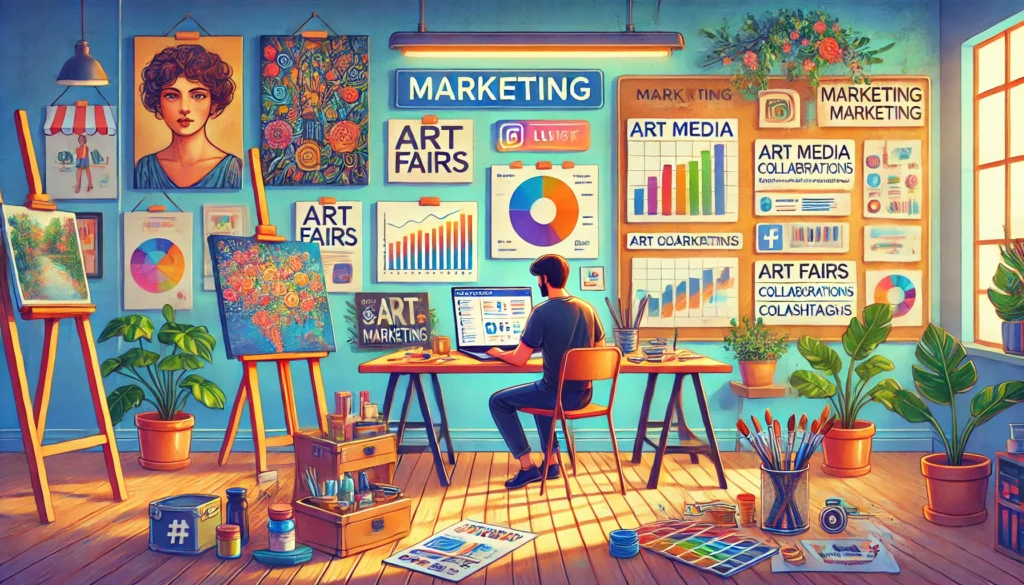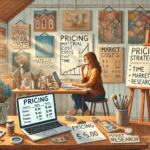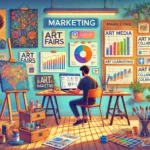Creating a Profitable Art Portfolio: A Comprehensive Guide

For artists aiming to turn their passion into a successful business, a well-crafted art portfolio is essential. It’s not just a collection of your works but a powerful tool to showcase your talent, attract clients, and drive sales. Here’s a step-by-step guide to building a profitable art portfolio.
1. Define Your Purpose
Before you start assembling your portfolio, clarify its purpose. Ask yourself:
- Are you targeting gallery exhibitions?
- Do you want to attract private clients or art collectors?
- Is your goal to sell online or secure freelance commissions?
Understanding your goals will help you tailor your portfolio to meet specific objectives.
2. Select Your Best Work
Quality matters more than quantity. Include only your best pieces that:
- Highlight your unique style and skills.
- Represent the niche or genre you specialize in.
- Tell a cohesive story about your artistic journey.
Tip: Regularly update your portfolio to replace older works with fresh, relevant pieces.
3. Showcase Versatility and Expertise
While maintaining a consistent theme, demonstrate your range by including:
- Different mediums (e.g., painting, digital, sculpture).
- Varied subjects (e.g., portraits, abstracts, landscapes).
- Examples of commissioned work or client projects.
This helps potential buyers and clients see your adaptability and breadth of talent.
4. Organize Your Portfolio Strategically
Present your work in a logical, visually appealing manner. Consider:
- Chronological Order: Show your growth as an artist.
- Thematic Grouping: Arrange by themes, styles, or mediums.
- Client-Focused: Highlight works that resonate with your target audience.
Use high-quality images and ensure consistent formatting for a professional look.
5. Include Context for Each Piece
Add brief descriptions or stories for your artwork. Include:
- The title and year of creation.
- The inspiration or story behind the piece.
- The medium, size, and techniques used.
This adds depth to your portfolio and engages viewers emotionally.
6. Build an Online Portfolio
An online portfolio expands your reach and makes your work accessible to a global audience. Tips for creating an effective online portfolio:
- Use platforms like Squarespace, Behance, or ArtStation.
- Ensure it’s mobile-friendly and easy to navigate.
- Include a professional artist bio, contact information, and links to your social media.
- Integrate an e-commerce feature for direct sales.
7. Highlight Testimonials and Reviews
If you’ve worked with clients or sold pieces, include:
- Testimonials from satisfied customers.
- Reviews from galleries or exhibitions.
- Notable achievements or awards.
Social proof builds credibility and attracts new opportunities.
8. Offer Limited Editions and Prints
Make your portfolio profitable by offering:
- Limited edition prints to create exclusivity.
- Affordable reproductions for a wider audience.
- Bundled packages, such as multiple prints at a discount.
This strategy caters to different budget ranges and maximizes sales potential.
9. Leverage Social Media
Use platforms like Instagram, Pinterest, and TikTok to:
- Share snippets of your portfolio.
- Drive traffic to your online portfolio or website.
- Engage with your audience by sharing behind-the-scenes content.
Pro Tip: Use consistent branding across all platforms to create a recognizable identity.
10. Attend Art Shows and Exhibitions
Showcasing your portfolio at physical events allows:
- Direct interaction with potential buyers and collectors.
- Networking with industry professionals.
- Opportunities to receive constructive feedback.
Bring physical copies or a digital presentation of your portfolio for maximum impact.
11. Optimize for Search Engines (SEO)
Make your online portfolio easy to find by:
- Using relevant keywords in your website titles and descriptions.
- Adding alt text to images.
- Writing blog posts about your creative process or themes.
SEO helps increase visibility and attract organic traffic.
12. Monitor and Measure Performance
Track the success of your portfolio by:
- Checking website analytics to see which works get the most views.
- Monitoring social media engagement.
- Gathering feedback from clients and peers.
Use this data to refine and improve your portfolio.
Conclusion
A well-designed art portfolio is more than a showcase of your work—it’s a gateway to new opportunities and income streams. By selecting your best pieces, adding context, and promoting your portfolio strategically, you can turn your artistic passion into a thriving business. Remember, consistency and authenticity are key to building lasting success.

























































































